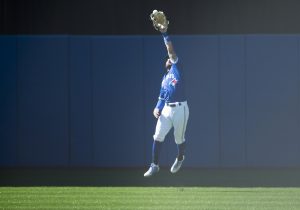The Angels reunited with Brandon Drury on a minor league contract last week, according to the MLB.com transaction tracker. The veteran infielder has been assigned to the Arizona Complex League. He’ll presumably head to Triple-A Salt Lake after a few tune-up games in rookie ball.
Drury’s most recent MLB action came with the Halos. The Angels signed him to a two-year, $17MM free agent deal during the 2022-23 offseason. Drury had a strong first season in Orange County, hitting .262/.306/.497 with 26 homers. His numbers plummeted in year two. Drury was one of the least productive players in MLB, posting a .169/.242/.228 slash over 97 games in 2024.
The former Silver Slugger award winner was limited to minor league offers on the heels of that disappointing showing. He landed with the White Sox and raked in Spring Training. That seemingly positioned him to break camp, but Drury broke his thumb late in March. Chicago released him before re-signing him to a minor league deal in April. Drury hit .179 in 10 Triple-A games before going on the minor league injured list on May 8. The Sox released him again a week later.
Drury has not played in more than two months. That explains the Angels’ decision to send him to the complex for a few games before he reports to Salt Lake. It’s a decent landing spot. He’s not only familiar with the organization but has a solid path to playing time if he hits the ground running once he resumes facing minor league pitching.
Christian Moore went on the injured list last week. The Halos are using Luis Rengifo and 26-year-old rookie Chad Stevens between second and third base. Yoán Moncada is on a rehab assignment at the complex and figures to resume his everyday third base role once he’s healthy. Moore hit .189 in 20 games before his injury, while Rengifo has had a terrible season. The switch-hitting Rengifo had a decent June, so perhaps he’s begun to find his stride, but he’s a poor defender who is batting .226/.268/.307 over 307 plate appearances on the year.

 Pillar, now 36, was able to engineer an incredible zero-to-hero career. The Blue Jays drafted him in the 32nd round of the 2011 draft. But despite that humble beginning, he would not only make it to the big leagues but he would stick around for more than a decade.
Pillar, now 36, was able to engineer an incredible zero-to-hero career. The Blue Jays drafted him in the 32nd round of the 2011 draft. But despite that humble beginning, he would not only make it to the big leagues but he would stick around for more than a decade.